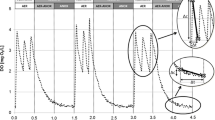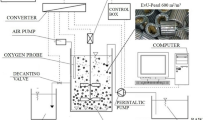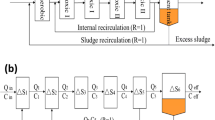A number of experiments was conducted in order to establish if N2O in the exhaust gas from an aerobic consortium of nitrifiers could be used as an indicator for monitoring the nitrification process. Laboratory-scale experiments with an activated sludge system showed a strong correlation between ammonia shock loads and both the concentration of N2O and the rate of increase of N2O in the exhaust gas for shock loads less than 1.60 mg ammonical nitrogen (NH3-N) per g total suspended solids (TSS). For greater ammonia shock loads, correlation was found between build-up of nitrite in the aeration tank and the concentration of N2O in the exhaust gas from the tank. When subjecting the system to aeration failure, a similar pattern was seen, with a correlation between nitrite build-up in the aeration tank and increases in the concentration of N2O in the exhaust gas. The results from this work suggest that the changes in N2O concentration in the exhaust gas from a nitrifying process may be a useful parameter for monitoring such processes.
Similar content being viewed by others
Author information
Authors and Affiliations
Additional information
Received 15 October 2001/ Accepted in revised form 05 June 2002
Rights and permissions
About this article
Cite this article
Burgess, J., Colliver, B., Stuetz, R. et al. Dinitrogen oxide production by a mixed culture of nitrifying bacteria during ammonia shock loading and aeration failure. J Ind Microbiol Biotech 29, 309–313 (2002). https://doi.org/10.1038/sj.jim.7000286
Issue Date:
DOI: https://doi.org/10.1038/sj.jim.7000286




